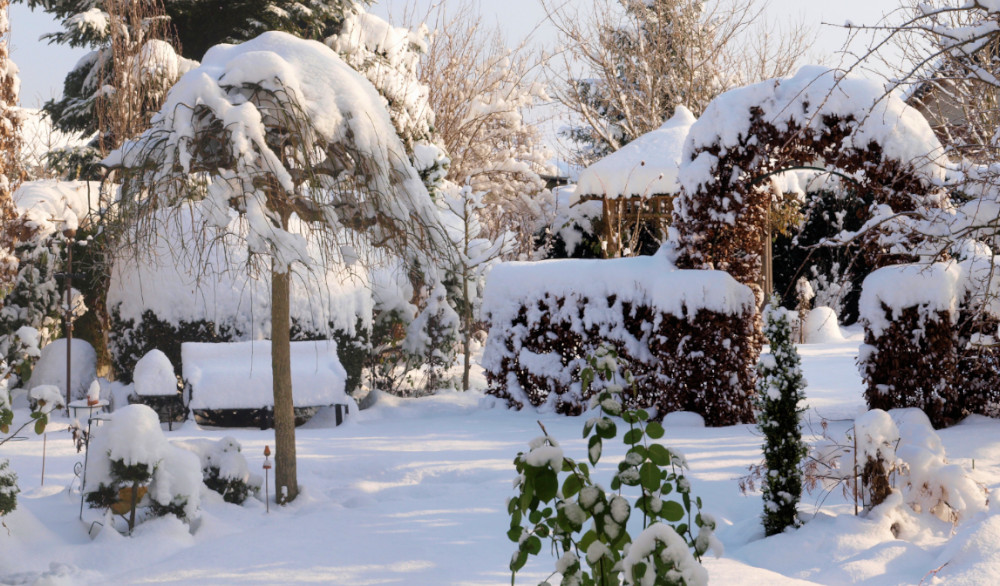How to Garden Through the Year
How to Garden Through the Year

Gardening is not just for spring and summer, to get the very best from your garden it is a long term relationship. Like most things in life the old adage “you get out what you put in” is true and your outside space is absolutely one of those things. Being in the garden or even just outside when you would rather not be can often be one of the most soul reviving things you can do. Remember when you were a child and running and splashing about in the rain or playing in the snow? It’s invigorating, energizing and rejuvenating. So here are some ideas to help keep you gardening throughout the year and connected to your outside spaces.
Winter
At first glance it looks as though not much happens in the garden in winter but actually there is a lot going on – below the surface. Often a lot of plants will do their growing of the rootstock in the winter and preparing for the year ahead. This is your cue to do the same – prepare for the year ahead for your garden. Plant out your spring bulbs such as daffodils, tulips and alliums just a name a few. Reflect on things that you enjoyed in the garden last year and things you would like to change. If plants are not working for you any more or are past their best then winter is the best and easiest time to do this before their vigorous growth starts and you are not fighting with masses of top growth. Clearing borders and reconnecting with the earth is a fundamental of gardening and often is when you see the first glimmers of new growth and therefore hope of brighter things to come after the long dark days of winter. Conditioning the soil with mulch or compost in the winter is like giving your plants a warm drink and a nice blanket. It helps sustain them and give them the extra energy to perform for you in the warmer months.
Pruning is also a job for the winter as it stimulates growth, as a general rule reduce the size by one third and look for damaged, diseased and dead branches or stems. Remove those to give your plant or tree the best chance also look for stems or braches which are crossing each other as they will rub and disease can set in to the open wound. Use clean and sharp secateurs or loppers and cut straight across to make a tidy and clean cut.

Spring
Spring is a season of growth and after the quiet preparation and reflection of winter spring is where things wake up and emerge from their hibernation. Spring bulbs are the first to herald in a bit of colour into the garden while the early herbaceous perennials like Dicentra and Euphorbia get going. This is the season to get started with the seeds and plug plants ready for planting out. It is also in spring when the lawn gets its first cut of the year. An easy error to make is to cut the grass too short initially, the best way to cut the grass is to cut it to just take the top off the blades and reduce to the required length by weekly cuts. This promotes thicker growth of grass but be careful not to fall into the trap of cutting it too short otherwise it will brown and look dry no matter how much water it gets.
Staking tall perennials in late spring is advantageous while the ground is still soft from winter and so the plants will grow up through the support so will look a bit more natural. Prevention is always better than the cure!
Summer
The season we have all been waiting for as gardeners, all the seedlings growing in greenhouses can go out into the ground. The hanging baskets can go up and the fruits of your labour are to be enjoyed by everyone who visits. But yet there is still always something to do! Through the summer there are three main jobs that must be maintained above all else. Watering, weeding and deadheading. We often tend to have either all or nothing regarding rain through the summer but in dry spells it is important to make sure there is enough for the plants to drink. Watering in the cooler parts of the day is most beneficial so it has chances to reach the roots before it evaporates and try to water the earth rather than the actual plant and avoid getting petals wet. Feeding plants with a proprietary feed weekly or fortnightly will help too, especially those in pots and containers but not essential.
Weeding is a chore throughout the summer so it does pay to keep on top of them. Walking round the garden with your morning cup of tea while pulling out weeds is half an hour well spent and much less effort than having to devote a day to tackling the whole garden! Many summer flowering plants will benefit from deadheading through the season. The life cycle of a plant is to grow – flower – set seed – die. By removing the spent flowers before they set seed tricks the plant into flowering more so the plant lasts longer. The fact that it keeps things looking tidy is a happy by product.

Autumn
Like all good stories there is always the falling action after the climax much like autumn after the crescendo of summer. Things fade both the flowers and our energy as gardeners. Some flowers will hold on until the first frosts such as the dahlias and the cosmos. But what comes at the end of summer and early autumn is harvest time and so fruit trees and allotments are often still bursting with life to prolong our reward for our care and diligence of the year. Fallen leaves are also an important harvest to be collected and turned to mulch for winter application to the borders or to fortify homemade compost.
It is tempting in autumn to clear everything out of the borders and pots to make everything look a little tidier but leave some things like seed heads for the birds and hollow flower stems from dahlias or rudbeckias for insects and bees. A happy healthy garden works in symbiosis with gardener, plants and wildlife so by all means clear away soggy undergrowth where it covers crowns of plants but leave something as payment to the garden helpers who have been on pest control and pollination duty all year.
Like all relationships the more time spent together the closer the relationship is and by gardening throughout the year ultimately gives you more joy and pleasure from your garden in the high seasons. After all no gardener ever regrets spending too much time in the garden.





